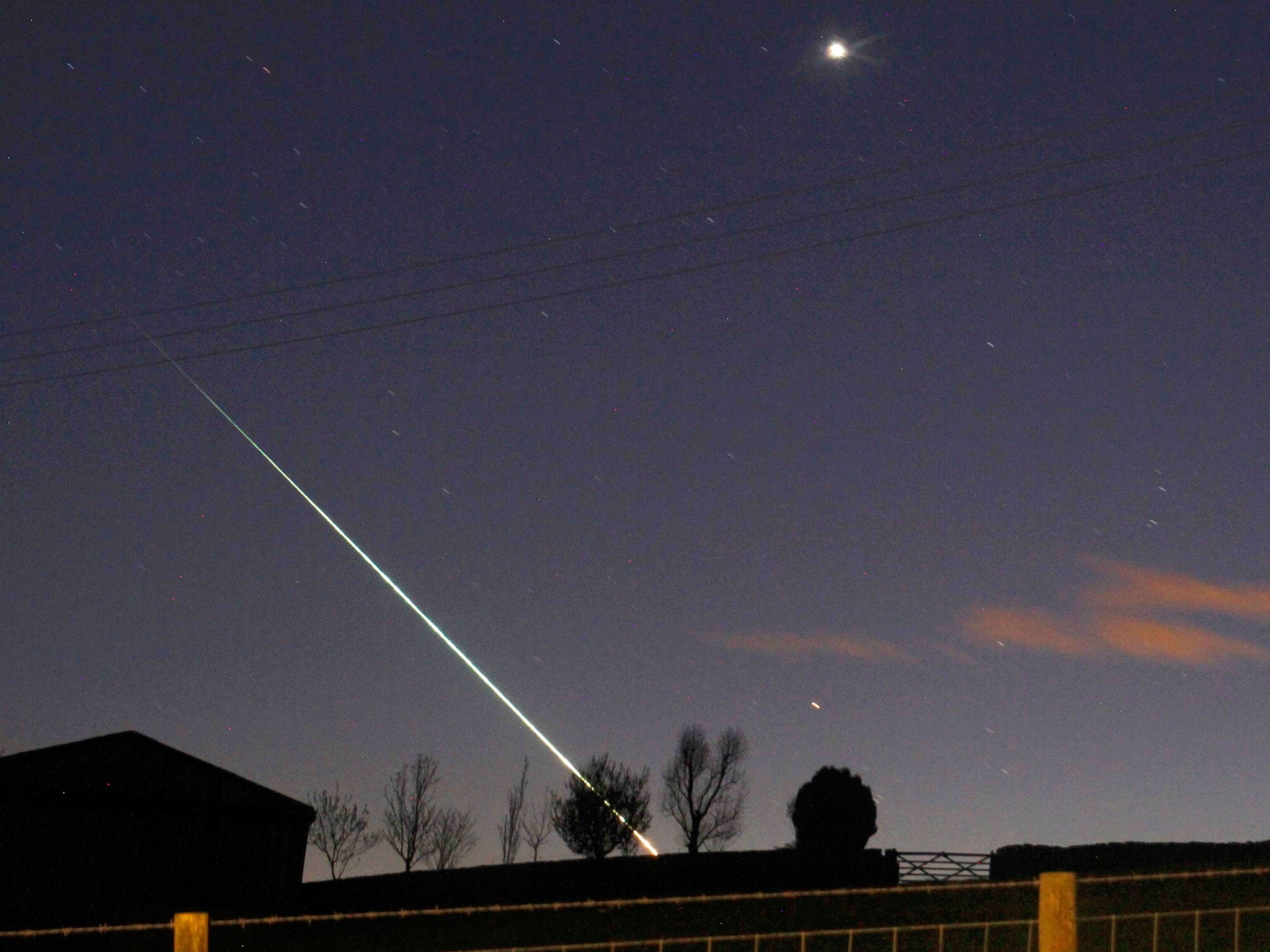Bright object shoots through sky as plane lands at Heathrow airport
Object thought to be meteor passes through the atmosphere

Your support helps us to tell the story
From reproductive rights to climate change to Big Tech, The Independent is on the ground when the story is developing. Whether it's investigating the financials of Elon Musk's pro-Trump PAC or producing our latest documentary, 'The A Word', which shines a light on the American women fighting for reproductive rights, we know how important it is to parse out the facts from the messaging.
At such a critical moment in US history, we need reporters on the ground. Your donation allows us to keep sending journalists to speak to both sides of the story.
The Independent is trusted by Americans across the entire political spectrum. And unlike many other quality news outlets, we choose not to lock Americans out of our reporting and analysis with paywalls. We believe quality journalism should be available to everyone, paid for by those who can afford it.
Your support makes all the difference.Video footage from Heathrow has captured the moment an unusual bright object races through the sky as a plane lands at the London Airport.
The video, from aviation enthusiast site Airlive, shows an iridescent object shooting through the night sky towards the earth, seemingly past a landing plane.
The website posted the footage on Twitter, writing: "Look at that amazing shooting star our cam just caught in the sky of Heathrow Airport!"
On Twitter, Airlive described the object as a 'shooting star'.
However, Clemens Rumpf, speaking to MailOnline and a specialist in the study of space debris, told the website: "My hunch is that this was a large meteor about one metre in diameter. These events occur harmlessly multiple times a year but can be spectacular when caught on camera.
"There was probably no immediate danger for any passenger aircraft as these objects tend to burn up, as seen in the footage, at altitudes of 20 to 45 miles (30 to 70 km), well above the flight level of planes.
"Larger objects are a concern for public safety as they release enough energy to cause damage on the ground, as with the Chelyabinsk meteor in 2013."
Several people were injured when the Chelyabinsk meteor landed in Russia in 2013.

According to the NASA website, more than 100 tons hit the earth daily, in "dust and sand-sized particles", while roughly "once a year an automobile-sized asteroid hits Earth's atmosphere, creates an impressive fireball, and burns up before reaching the surface."
The website also says that "space rocks smaller than about 25 meters (about 82 feet) will most likely burn up as they enter the Earth's atmosphere and cause little or no damage."
Dr Morgan D J Hollis, of the Royal Astronomical Society, told The Independent: It's most likely a piece of debris from space, which could be either natural (i.e. a piece of rock or dust) or man-made. Small pieces hit the Earth all the time, and most burn up very high in the atmosphere and we don't see them.
"If they're slightly larger,like this one, they survive longer and so reach lower in the atmosphere, where we see them as meteors, also know as shooting stars."
Join our commenting forum
Join thought-provoking conversations, follow other Independent readers and see their replies
Comments